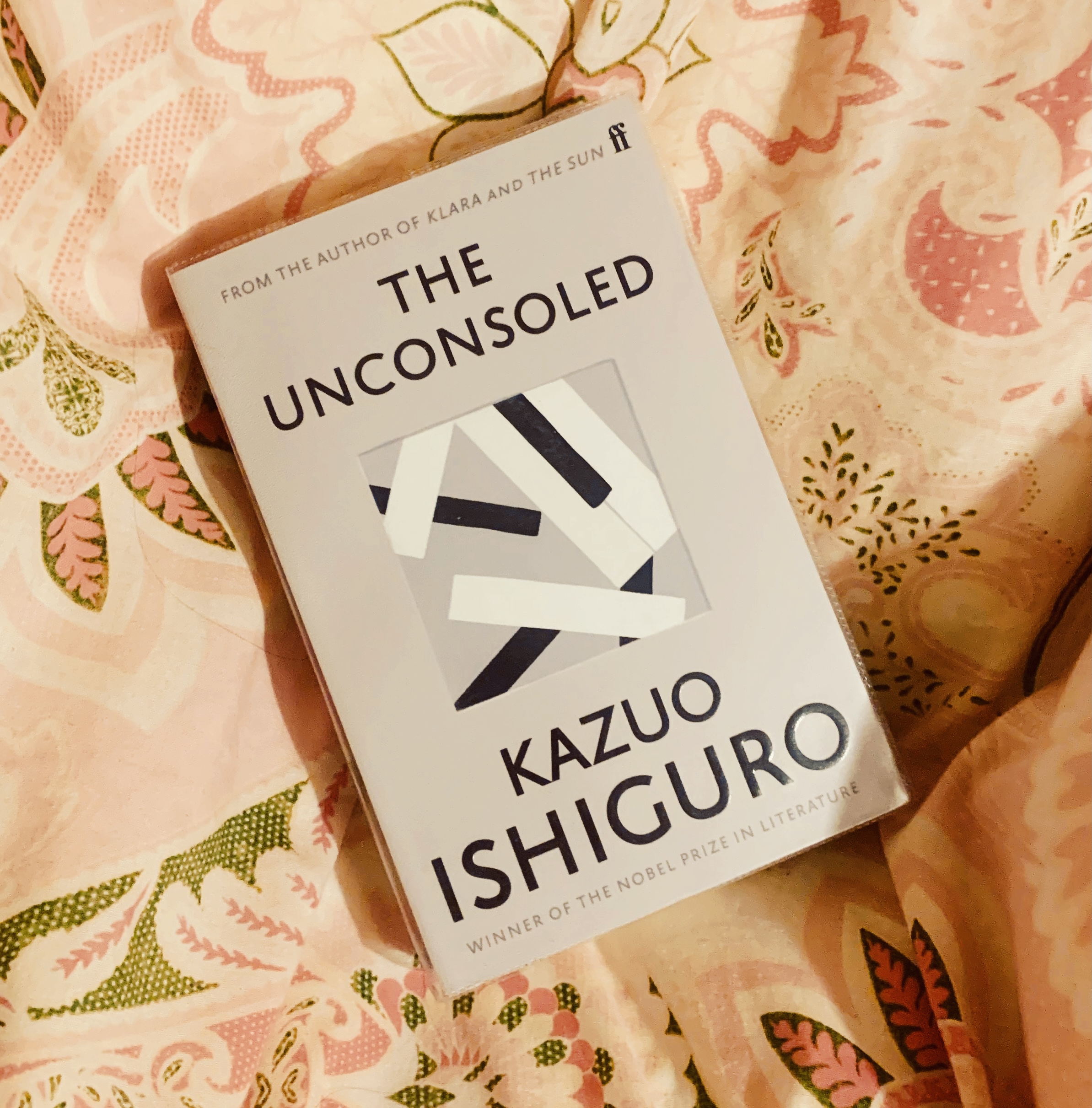 The Unconsoled by Kazuo Ishiguro is a novel that defies traditional narrative conventions, immersing readers in a dreamlike landscape where time, space, and identity blur. The story follows Ryder, a renowned pianist, who arrives in a nameless European city to perform a concert. However, he becomes entangled in a series of surreal events, constantly meeting people who expect things from him, even though he has no recollection of these relationships.
The Unconsoled by Kazuo Ishiguro is a novel that defies traditional narrative conventions, immersing readers in a dreamlike landscape where time, space, and identity blur. The story follows Ryder, a renowned pianist, who arrives in a nameless European city to perform a concert. However, he becomes entangled in a series of surreal events, constantly meeting people who expect things from him, even though he has no recollection of these relationships.
As Ryder navigates a labyrinthine city filled with odd characters and illogical occurrences, the boundaries between reality and dream become increasingly elusive. The novel explores themes of memory, expectation, and the elusive nature of artistic creation, inviting readers to question the very fabric of the narrative itself.
Characters
Ryder: The protagonist, a celebrated pianist, arrives in the unnamed city to perform a concert. As he moves through the city, Ryder encounters various individuals who claim to know him, demanding his attention and assistance. His character embodies the disorientation and disconnectedness that permeate the novel.
Boris and Sophie: A couple who befriend Ryder, Boris and Sophie play pivotal roles in the narrative. Their interactions with Ryder reveal the intricate web of relationships that seem to entangle him, adding to the overall sense of confusion and mystery.
The Porter: A recurring character in the novel, the Porter symbolizes the unpredictability and arbitrariness of Ryder’s journey. His appearances and disappearances contribute to the dreamlike atmosphere, blurring the lines between reality and illusion.
The Governing Council: A group of authoritative figures who expect Ryder to adhere to their demands and schedules, the Governing Council represents societal expectations and the pressure placed on individuals to conform. Their presence adds a layer of tension and absurdity to the narrative.
The Unconsoled Ending Explained
Note: Spoiler Alert
“The Unconsoled” concludes with a surreal and ambiguous ending that mirrors the dreamlike nature of the entire narrative. As Ryder prepares for his much-anticipated concert, the novel refrains from providing a clear resolution to the myriad plotlines and conflicts introduced throughout the story.
The ending maintains the novel’s enigmatic atmosphere, leaving readers to grapple with the ambiguity of Ryder’s journey. It suggests that the city and its inhabitants exist as manifestations of Ryder’s subconscious, creating a dreamscape where the boundaries between reality and imagination dissolve.
The lack of a definitive conclusion challenges readers to interpret the narrative in their own way, fostering a sense of introspection about the nature of memory, identity, and the artistic process. Ishiguro intentionally leaves the novel open to multiple interpretations, allowing readers to engage with the story on a personal and subjective level.
Frequently Asked Questions
Is It based on a true story? No, “The Unconsoled” is a work of fiction. Kazuo Ishiguro crafted a narrative that transcends traditional storytelling, drawing on elements of surrealism and dream logic. While the novel explores universal themes such as memory and identity, the specific events and characters are products of Ishiguro’s imaginative prowess.
What is the main idea of the book? “The Unconsoled” delves into the complexities of identity, memory, and the expectations placed on individuals. Ryder’s journey through the surreal city serves as a metaphor for the challenges of navigating societal pressures and the elusive nature of artistic creation. The novel invites readers to reflect on the fluidity of reality and the subjective nature of experience.
Is this book worth reading? Absolutely. “The Unconsoled” offers a unique and immersive reading experience for those who appreciate unconventional narratives and existential explorations. Ishiguro’s masterful prose, coupled with the novel’s dreamlike atmosphere, creates a work that challenges and captivates readers in equal measure. If you enjoy novels that push the boundaries of storytelling, this book is a compelling choice.
What is the symbolism in this book? Symbolism in “The Unconsoled” is rich and open to interpretation. The city itself may symbolize the subconscious mind, with Ryder’s interactions representing the complexities of memory and expectation. The recurring motif of the concert reflects the pressure to perform and conform to societal expectations. The novel’s dreamlike quality invites readers to find personal meaning in its symbols and explore the deeper layers of the narrative.
Can you recommend me any other interesting books of this author? Certainly. If you appreciate Kazuo Ishiguro’s narrative style and thematic depth, “Never Let Me Go” is another acclaimed work that explores the intersection of identity, memory, and societal expectations. Ishiguro’s ability to weave intricate stories with profound philosophical undertones is evident in both novels, making them worthwhile reads for fans of his writing.
Can you recommend me other interesting books in the similar genre? For readers intrigued by surreal narratives and explorations of identity, Haruki Murakami’s “Kafka on the Shore” offers a blend of magical realism and existential contemplation. The works of Italo Calvino, particularly “Invisible Cities,” share thematic resonance with “The Unconsoled,” exploring the interplay between imagination and reality in a captivating and unconventional manner. These books provide compelling journeys into the realms of the surreal and the philosophical.

